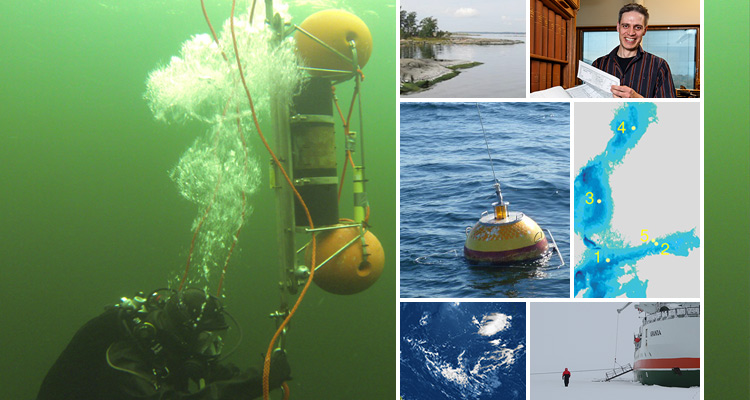Seas
Oceans cover around 70 % of the Earth’s surface, and they form a large and continuous ocean cover. However, only around 5 % of the oceans have been researched. It is said that we know more about the space than the oceans. The Finnish Meteorological Institute has research, observations and forecasts mainly in the Baltic Sea and polar sea areas.

Although the oceans contain some 97 % of the Earth’s water, sea water is not counted to the humankind’s water resources, such as drinking or irrigation water, because it is too saline. The changes to Antarctica´s and Greenland’s ice mass caused by melting and freezing directly affect the amount of water in the oceans too. Also, the thermal expansion of water due to rising temperature makes the sea water volume increase and thus the sea level rise. Ocean currents balance the differences in temperatures between the equator and the polar areas, so they are an important factor in the Earth’s climate. Thus, the oceans have a significant role on the Earth’s energy, water, and carbon circulation.
Around half of the Earth’s lifeforms are dependent on the oceans. Oceans give food, medicines, and minerals. Sea routes are also used in transporting goods and people.
Baltic Sea
The Baltic Sea is very different to the oceans. It is connected only to the Atlantic Ocean via the Danish straits. Its salinity is only about a fifth of that of the oceans. The Baltic Sea is also very shallow. Its average depth is around 54 meters, whereas the average depth in the oceans is up to 3,8 kilometres.
The Baltic Sea is one the most polluted seas in the world, because of the nutrient loading and the slow renewal of the deep waters. Due to its northern location the Baltic Sea freezes every year at least partly.
Arctic sea areas
The border of the arctic sea area is defined by the extent of the winter ice coverage. The Arctic Ocean is surrounded by land areas, and it has largely a permanent ice cover. The Arctic Ocean and it´s ice are important habitats for many species.
The climate change has a big effect on the arctic areas, because the temperatures there have been rising twice as much as the average of the World, and the area covered by ice has diminished. As the ice melts, the economic use and traffic in the arctic sea areas increase, which creates new challenges.
The Southern Ocean
The Southern Ocean is the ocean surrounding Antarctica. Since the Southern Ocean is not separated from the other oceans by any land mass, the International Hydrographic Organization (IHO) has defined its northern boundary to the cold Antarctic Circumpolar Current. It circulates from west to east about at the latitude of 60° S.
A large part of the Southern Ocean is covered by ice every year, and part of the Antarctica´s coast is always ice covered. The annual variation of the ice cover is greater than in the Arctic Ocean and the ice is thinner on average. Climate change affects the Southern Ocean in many ways, but it has been studied less than the Arctic Ocean due to the difficult conditions and long distances.
8.3.2023
